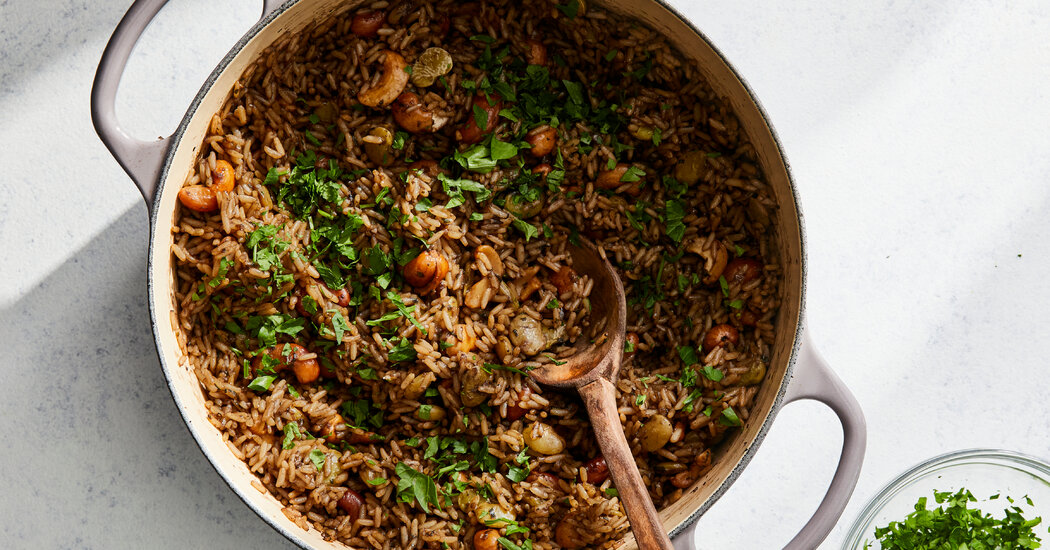
For much of the year in Haiti, rain seeps into the crevices of rotting wood, sparking the growth of an island delicacy: an earthy, black mushroom named djon-djon that is the main ingredient for a rice dish made on special occasions.
The mushrooms are handpicked throughout the rainy season and left to shrivel in the sun. Then they’re sold across the island or bagged and exported to the United States, where Haitian Americans buy the dried mushrooms online or from Caribbean grocery stores.
For holidays, family events or Sunday dinners, Haitians clean the dried mushrooms thoroughly (or separate the woody stem from the cap, which has the most flavor). They soak and boil them in chicken broth to extract their meaty flavor, then cook rice in that stock and add lima beans. The mushrooms turn the rice a dark brown or black — thus the Haitian Creole name diri djondjon, or black mushroom rice, that some call the dish. Some people also add blue crabs, shrimp or lobster.
“It’s like gold,” Alain Lemaire, a Haitian chef in Miami, said of the mushroom. When his mother visits from Haiti, she brings about five pounds with her. He vacuum-seals the mushrooms and leaves them in the refrigerator for four months or more.
This year, djon-djon has been less plentiful than usual, because some cities in Haiti received less precipitation than normal in the rainy seasons (March to June and August to December). Prices have spiked, and Haitians living in the United States have contributed to an increase in demand. In a pinch, some cooks use djon-djon bouillon cubes to make the rice.
“It’s such a prized food that there are people who buy large amounts and send them to the United States and Canada to sell in the stores that serve the diaspora,” said Josiane Hudicourt-Barnes, an educator in Vineyard Haven, Mass. The mushrooms grow in the yard of her home near Pétion-Ville, Haiti.
Two years ago, Marc Robert Jeanniton started a business on Etsy to import and sell the mushrooms online. His mother, Monique Saint-Louis Jeanniton, is from Côtes-de-Fer, a city in the countryside southwest of Port-au-Prince where many of the mushrooms are grown. She buys djon-djon from farmers in the area.
“Djon-djon defines who we are when it comes to Haitian cuisine,” Mr. Jeanniton said.
Mr. Lemaire, the chef, and Natacha Gomez-Dupuy, the author of “Bak Fritay: Haitian Street Foods,” have also been experimenting with djon-djon by using it as an ingredient in foods like fresh pasta, gnocchi, aiolis and even in a homemade Oreo. Ms. Gomez-Dupuy has finished writing a book solely about the many ways people can use the mushroom.
Ms. Gomez-Dupuy, who worked with the World Central Kitchen to enhance their culinary program to teach aspiring chefs about Haitian cooking, thinks that the island’s native ingredients, notably djon-djon, have the potential to enrich the country’s cuisine and raise awareness of it around the world.
“Djon-djon is unique in flavor and texture,” she said, “and I think it’s a great product that can help Haitian gastronomy.”






